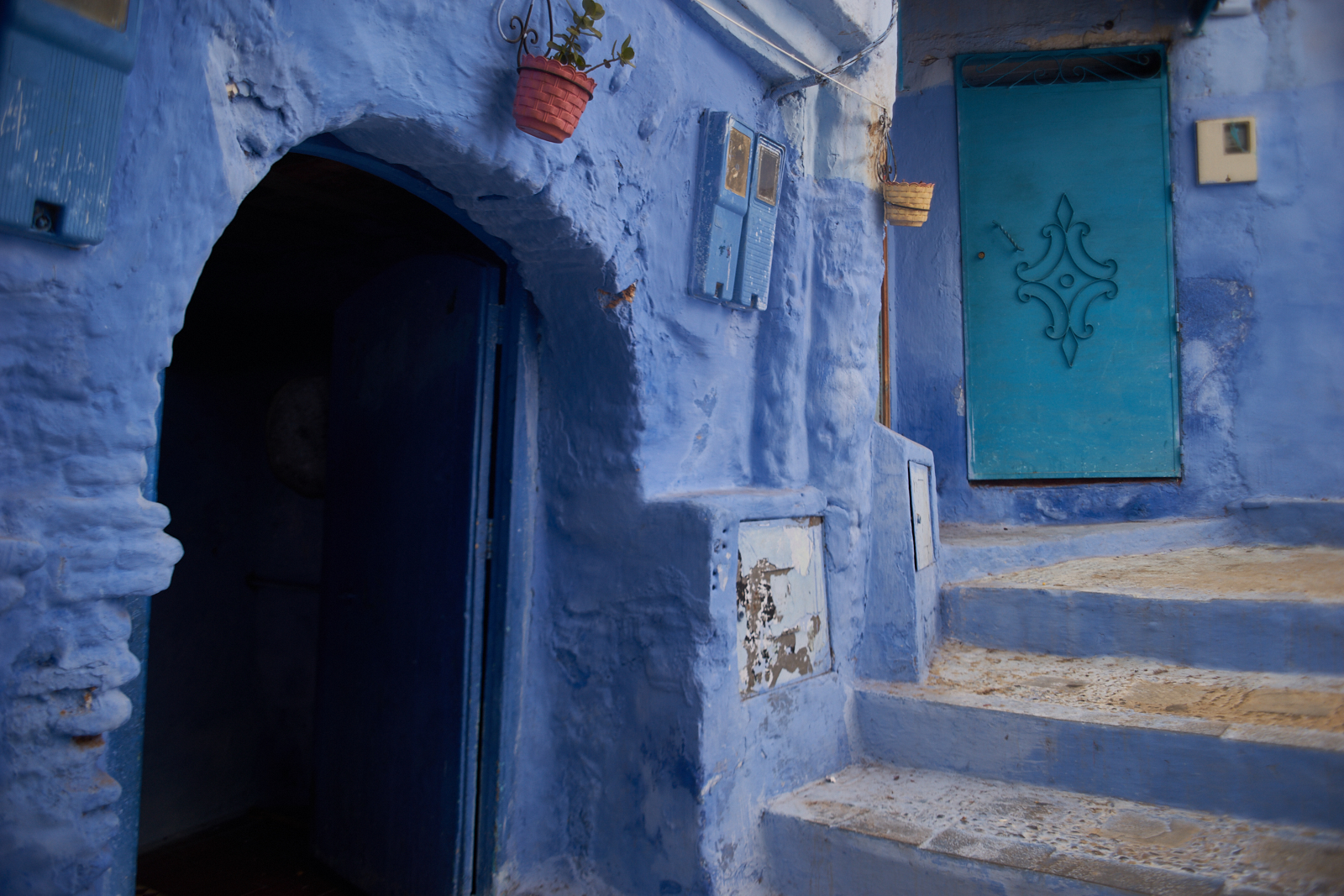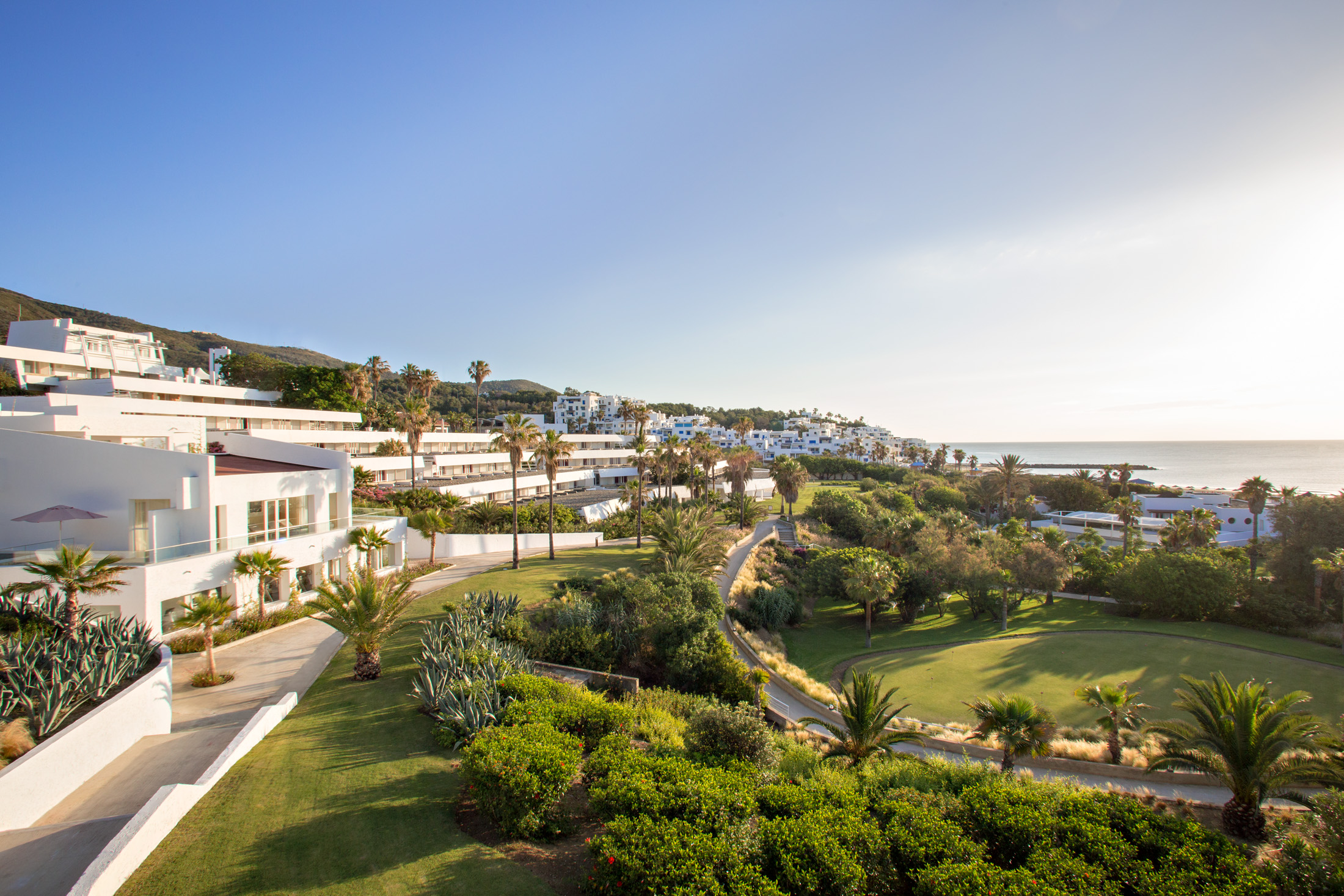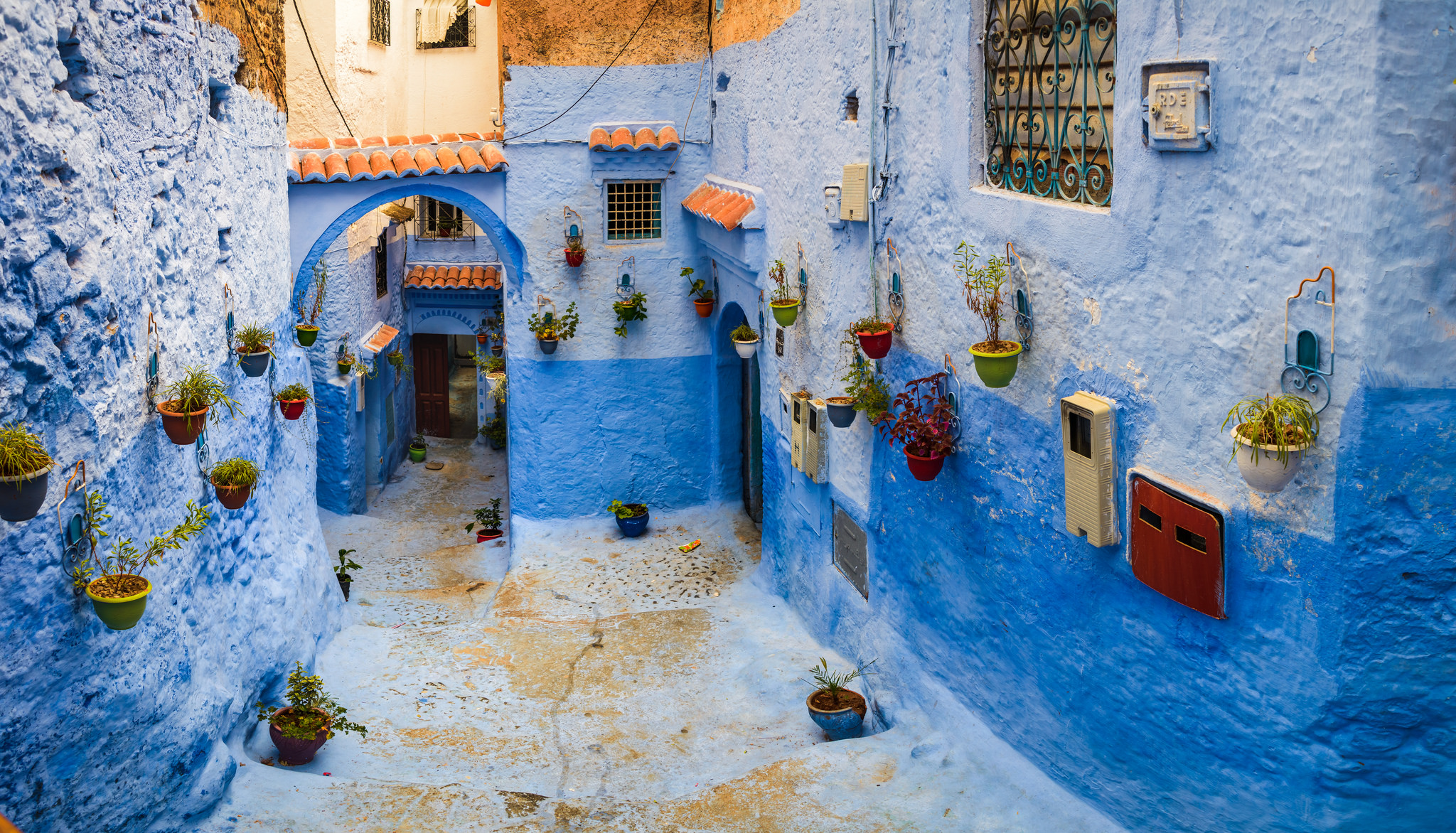-

Tétouan, Morocco.
Photo via Flickr, Robert Brands.
-

Club Med Yasmina is located along Morocco’s Mediterranean coast.
-

The Tétouan medina is the old part of the city.
Photo via Flickr, Carl Otterson.
-

Inside the medina.
Photo by Ilona Biro.
-

The medina is a maze of twisting alleyways.
Photo by Ilona Biro.
-

Chefchaouen is a dreamy mountain town south of Tétouan.
Photo via Flickr, Anthony Tong Lee.
-

The town is known for its blue buildings. Photo via Flickr, Rodrigo Silva.
Discovering Tétouan, Morocco
A hidden gem on the edge of the Mediterranean.
Think of Morocco, and well-travelled spots like Marrakesh, Casablanca, and Tangier might come to mind. But Tétouan? Not so much. This year, the city popped up on National Geographic’s featured destinations list for 2018, and being intrigued I immediately Google-mapped it. I’d planned to tour Andalusia with my daughter and wondered how close Tétouan was to Spain. Happily, I discovered that a one-hour ferry ride would get us there. Suddenly, Morocco was tantalizingly in reach, so we took advantage to pop over for a three-day visit to North Africa.
Once across on the ferry, we hired a car and driver and followed the coastal highway with endlessly beautiful views of the Mediterranean stretching out in front of us, backdropped by the Rif mountain range. Soon enough we found ourselves in Tétouan’s neighbouring resort zone of Cabo Negro, where verdant hillsides tumble down to the beach across from the Strait of Gibraltar, attracting a who’s who of Moroccan society, including Morocco’s King Mohammed VI who is known to spend summers here at one of his palaces. Gazing out at the postcard-perfect coastline, it was easy to see why.

Club Med Yasmina is a picturesque village of white stratified suites.
Club Med Yasmina occupies an enviable location on one of the finest beaches along this stretch of Morocco’s Mediterranean coast. One of Club Med’s first resorts outside of Europe, Yasmina celebrates its 45th anniversary in 2019 as an enduringly popular destination for Europeans, mostly French, with a smattering of Dutch and Spanish guests. A white village of stratified suites, Yasmina was built in a style similar to traditional Moroccan homes, with sweeping views of the ocean below. Guests have access to tennis courts, a full slate of water sports, the famed Cabo Negro golf course, and a Cinq Mondes spa. The two restaurants offer an outstanding selection of Moroccan and European dishes, but a highlight is the third restaurant, Tétouan, for its impeccable service and Moroccan specialties like lobster couscous and pasillas con pollo—squares of flaky pastry filled with a delectable mix of minced chicken, almonds, raisins, and spices.
After a morning on the beach, we cabbed away from the coast towards the heart of Tétouan, but by the time we reached its medina—the old part of the city and a designated UNESCO World Heritage Site—all the shops were shuttered and most people had retired to their inner sanctums for a mid-day siesta. With little going on, we decided to explore the rest of the city, and found our way to the Tétouan Centre of Modern Art, housed in an old train station. The gallery is home to a contemporary art collection with a surprisingly eclectic sampling of styles—everything from abstract expressionism to cubism and pointillism with a focus on Moroccan artists. The quality of the museum is no accident: Tétouan is home to one of just two fine art schools in the country (the other is in Casablanca), and has a growing reputation as a centre of fine arts. A wonderful way to immerse yourself in its artistic life is to go on an artisan tour, offered by Green Olive Arts. Visit carpet makers, leather workers, wood turners, and weavers, who will all welcome you into their ateliers. Should Tétouan’s artistic bent tempt you into a longer stay, Green Olive also offers month-long arts residencies which draw people from around the world.
By mid-afternoon, the city awoke from its nap and the medina came back to life. We accessed it from one of its seven gateways and entered a world that has barely changed since the 15th century when it was built by three distinct communities: Jewish, Moorish, and Andalucian. These three cultures lived side by side for centuries, creating a blend of influences unique in Morocco and evident in its Spanish-Moorish architectural style. It’s easy to get lost in the medina’s twisting alleyways, but friendly types are always nearby and happy to help you navigate. Give them a small tip for their services and they will leave you to your own wandering, but we appreciated their help finding our way around Tétouan’s labyrinthine heart.

The blue streets of Chefchaouen. Photo via Flickr, Anthony Tong Lee.
Though the city is a hub for the tourism industry on the coast, there’s no hint of commerciality as you walk the streets here. We sampled three or four different types of bread from centuries-old bakeries, and bought bags of nougat, brittle, and other nutty confections in the Jewish quarter. Once in a while, the alleyways led into a plaza where a souk, or market, each vending a specific line of wares, be it leather goods, pottery, or fresh vegetables. In addition to practical, everyday purchases, you can find hand-embroidered caftans and elaborately decorated tagines, at prices that are much more reasonable than in other Moroccan cities.
Our second morning, we set out early for a day trip to Chefchaouen in the Rif mountains. Located about an hour and a half south of Tétouan, this dreamy mountain town conjures up magical, Marc Chagall-like scenes around every corner. Buildings are painted myriad shades of blue and fitted with intricately carved wooden doors crowned with cascading masses of bougainvillea. While the origins of the blue walls are steeped in mystery, some locals say they were designed to deter pesky mosquitos, which perceived the blue as flowing water. Another theory is that Jewish people fleeing Granada in the 1400s brought the tradition over, as blue is a symbol of divinity in Judaism. Either way, it drew us here—along with the charming twisty cobblestoned lanes, the friendly locals and the streams and pools formed from the nearby mountain springs. We followed a trail to the highest point in town for a view from above, then descended into the cobblestoned Plaza Uta el-Hammam in the centre of town. We wandered past hand-loomed textiles and traditional garments on sale, and bought a few pots of paint so we could try to recreate the beautiful blue hues at home. All the while, fuelled by avocado juice and warm, honey-soaked maloui, traditional pancakes that women often sell from their front doorsteps. The next day we’d make our way back to Spain on the ferry, but for now all that remained was to say goodbye to lovely Chefcha, head back up to Tétouan’s coast, and enjoy the last rays of sunshine glinting off the Mediterranean.
_________
Never miss a story. Sign up for NUVO’s weekly newsletter, here.



